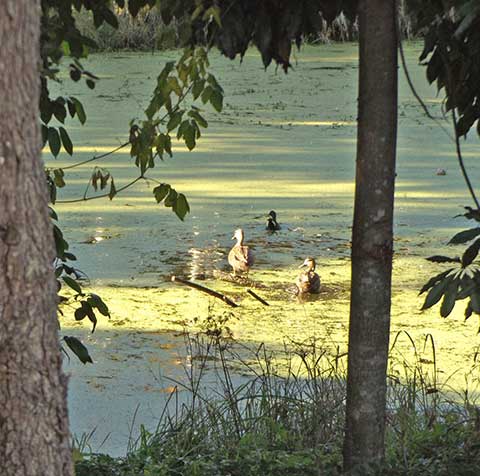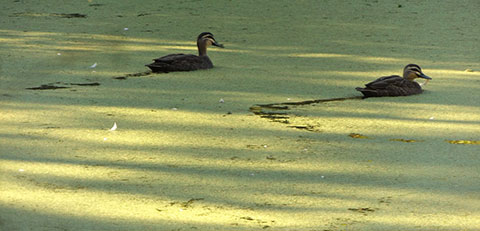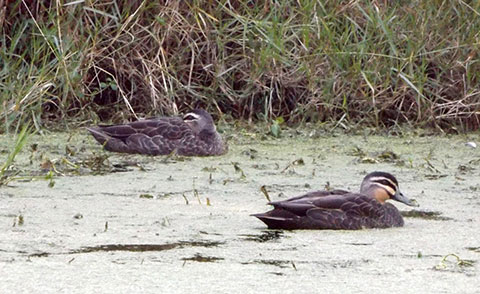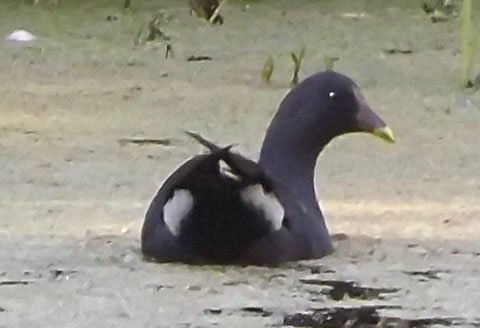The swamp/pond in the reserve below my block generally looks like a smooth bowling green. But now and then I see dark tracks through the algae topping carpet.

Going closer to investigate, I see two handsome Black Ducks entering the water, joining another bird that from a distance I assume will be a Purple Swamp Hen.

The ducks begin effortlessly gliding across the pond, trailblazing as they go. The trails close back over quite quickly. I could see four Black Ducks on the pond in all.

Black Ducks (Anas superciliosa) are common all over Australia. For once, males and females are similarly striking: the black eye stripes, peach cheeks and stunning individually outlined feathers, with a flashy emerald green ‘speculum’ hiding amongst them.

The other lone waterbird has me baffled. The colours aren’t right on the head and that distinctive yellow/lime beak has me beat. Could it be a Coot in a particular phase? Can anyone help?
Many thanks Joy. The lack of red on the bill threw me!
And yes Helen, the graceful gliding is a good lesson!
Hi Sharyn. The white ‘bum patches’ are the same as on the Dusky Moorhen (Gallinula tenebrosa) and that bird also has a yellow tip to the bill, but it’s usually red above the yellow tip. According to Michael Morcombe’s fieldguide, the non-breeding plumage is ‘olive, some smudged black, dull red’. Your bird looks purple, but dusky moorhens are grey-ish – maybe the purple is an artefact of the photo.
Ducks exist it seems to me to encourage humans to slow down, glide through their day, take advantage of the food at hand – or under foot – and to go gently into the distance leaving irrationality, discord, anxiety behind.